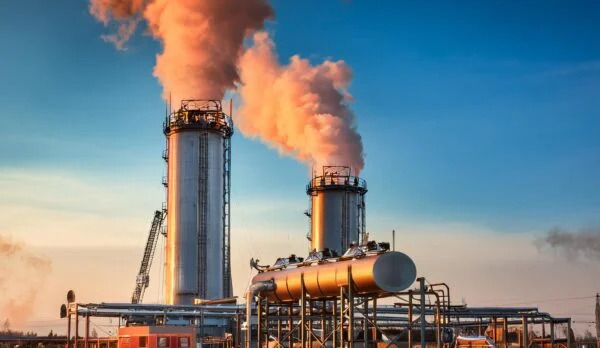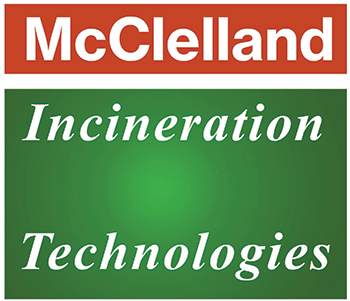
- February 18, 2024
- by Chirag
- Mc Clelland
Harnessing Technology: The Role of Gaseous Waste Incinerators
In the pursuit of sustainable waste management solutions, gaseous waste incinerators have emerged as a critical technology for efficiently and safely disposing of hazardous gases and volatile organic compounds (VOCs). These specialized facilities play a crucial role in reducing environmental impact while meeting stringent regulatory standards. Let’s explore what gaseous waste incinerators are, how they operate, their benefits, and their significance in modern industrial practices.
Understanding Gaseous Waste Incinerators
For more information and studying further on incineration or incinerator supplier India or Industrial incinerator supplier India, visit www.mcclellandindia.com. It is located in Mumbai, Maharashtra, India with projects in all states of india – Gujarat, Maharastra etc. and all over the world.
Gaseous waste incinerators are specialized combustion units designed to treat and destroy hazardous gases and VOCs emitted from industrial processes. Unlike solid waste incinerators that handle physical materials, gaseous waste incinerators focus on the treatment of airborne pollutants. These pollutants are typically in the form of gases or vapors that pose environmental and health risks if released untreated into the atmosphere.
How Gaseous Waste Incinerators Work
- Gas Collection: Hazardous gases and VOCs are collected from industrial processes through ventilation or extraction systems. These gases are often mixed with air or other gases to achieve optimal combustion conditions.
- Combustion Chamber: The collected gases are then introduced into the combustion chamber of the incinerator, where they are exposed to high temperatures. The combustion process initiates at temperatures ranging from 800 to 1200 degrees Celsius, depending on the specific pollutants being treated.
- Pollution Control: Advanced air pollution control technologies are integrated into gaseous waste incinerators to minimize emissions. These technologies include thermal oxidizers, catalytic oxidizers, scrubbers, and adsorption units. They work to break down pollutants into harmless substances like carbon dioxide and water vapor before being released into the atmosphere.
- Monitoring and Compliance: Continuous monitoring systems ensure that the incinerator operates within permissible emission limits set by environmental regulations. Regular inspections and maintenance are conducted to uphold operational efficiency and compliance.
Benefits of Gaseous Waste Incinerators
- Effective Destruction: Gaseous waste incinerators achieve high destruction efficiencies (often above 99%) for hazardous gases and VOCs, significantly reducing their environmental impact.
- Versatility: They can handle a wide range of pollutants and volatile organic compounds emitted from various industrial processes, including chemical manufacturing, pharmaceutical production, and wastewater treatment.
- Energy Recovery: Some gaseous waste incinerators are designed to recover energy from the combustion process, either in the form of steam or electricity, contributing to energy efficiency and cost savings.
- Environmental Protection: By preventing the release of harmful pollutants into the atmosphere, gaseous waste incinerators help protect air quality and public health.
Challenges and Considerations
Despite their benefits, gaseous waste incinerators face challenges such as:
- Complexity and Cost: Designing and operating gaseous waste incinerators require significant expertise and investment in technology and infrastructure.
- Emission Control: Achieving and maintaining compliance with stringent emission standards can be technically challenging and requires ongoing monitoring and optimization.
- Public Perception: Concerns about air emissions and potential health impacts may arise from communities located near gaseous waste incinerators, necessitating transparent communication and adherence to regulatory guidelines.
The Future of Gaseous Waste Incinerators
As environmental regulations continue to evolve globally, the future of gaseous waste incinerators will likely focus on improving efficiency, reducing energy consumption, and exploring innovative technologies. Research and development efforts aim to enhance combustion processes, optimize pollution control technologies, and integrate sustainable practices into incinerator operations.
Conclusion
Gaseous waste incinerators represent a crucial technological advancement in the realm of industrial waste management, offering an effective solution for treating hazardous gases and volatile organic compounds. By employing advanced combustion and pollution control technologies, these facilities play a pivotal role in safeguarding the environment and public health. As industries strive towards greater sustainability and regulatory compliance, gaseous waste incinerators will continue to be indispensable tools in our collective efforts to mitigate environmental impact and foster a cleaner, healthier planet for future generations.




